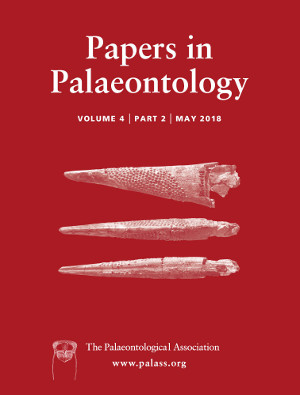Reg. Charity No. 1168330

The Mahmudia Quarry is located in the North Dobrogean Orogen (Romania), representing the western tip of the Palaeotethys‐issued Cimmeride Orogenic System. One sample from the Tubiphytes‐microbial reef exposed in the quarry yielded an abundant well‐preserved ostracod assemblage of Bithynian, early Middle Anisian, Middle Triassic age. We report the occurrence of 56 ostracod species distributed among 23 genera. Ten species are newly described: Acratia caeracella sp. nov., Bairdia mandruella sp. nov., B. liviae sp. nov., Hungarella mahmudiaensis sp. nov., Kempfina tineriella sp. nov., Liuzhinia antalyaformis sp. nov., L. bithynica sp. nov., L. edvardgriegi sp. nov., Microcheilinella? contrariella sp. nov., Paracypris oanaella sp. nov. One species is renamed, Bairdia monostorii nom. nov. and the diagnosis of the genus Palaeocypridina is emended to include the central muscle scars pattern. The Tubiphytes ecosystem is complex with a multi‐layer food chain, as shown by the presence of diversified carnivorous nekto‐benthic ostracods, being both prey and predators of other organisms. The palaeoenvironmental requirements of the main ostracod taxa indicate a deposition in an open marine environment, on the outer platform‐upper slope zone, in accordance with information provided by other proxies. We discuss the relationship between ostracods and microbial mats during the Triassic and conclude that the composition of assemblages is related both to the characteristics of this chemosynthetically‐driven habitat and to bathymetry. However, some taxa, such as the genus Liuzhinia, are typical of Triassic microbial ecosystems. We perform the first analysis of ostracod provincialism during the Anisian and identify a distinct peri‐Palaeo‐Tethyan province.